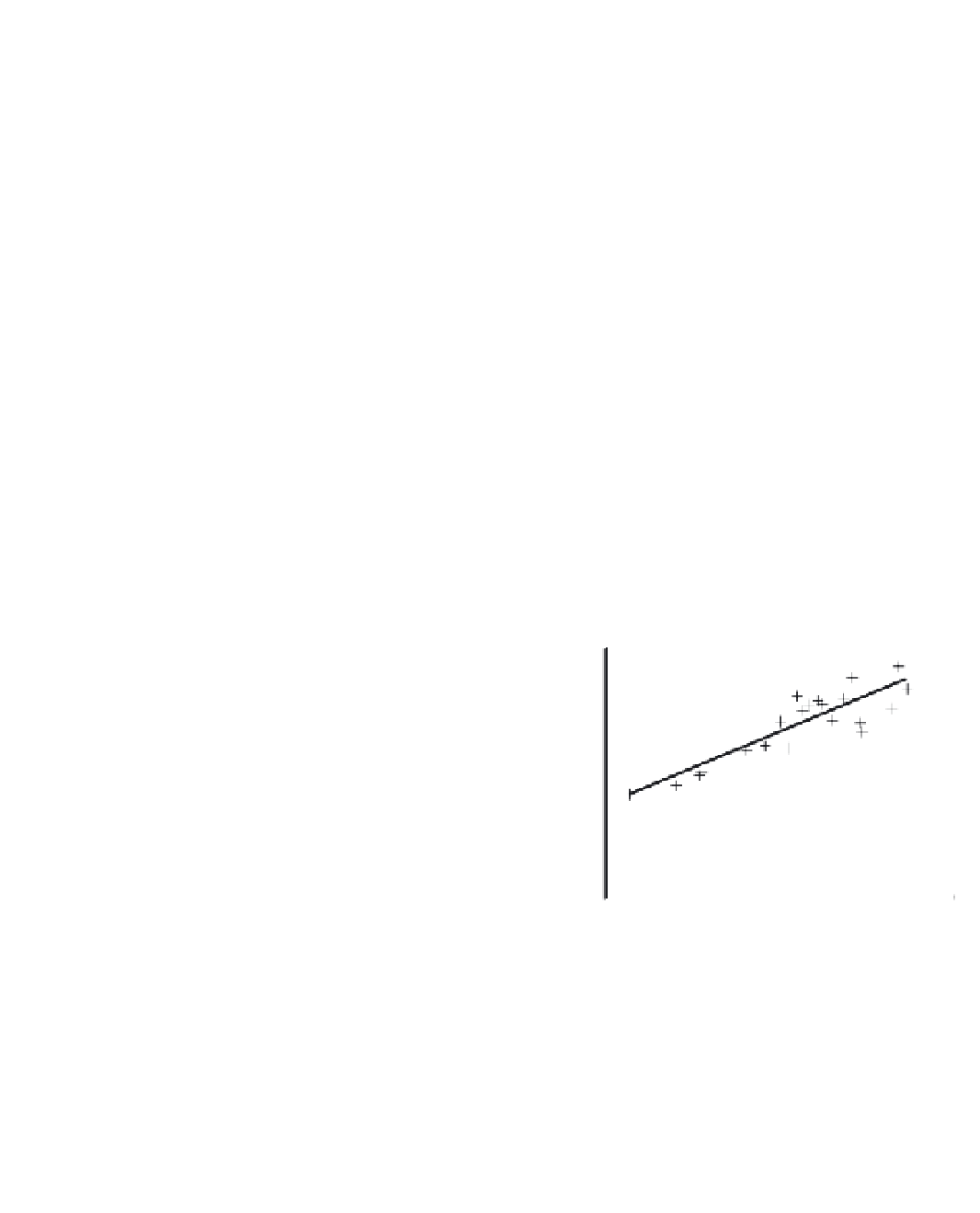Geoscience Reference
In-Depth Information
2
The assumption is made that each storm or low
flow event is independent of another used in the
data set. This is relatively easy to guard against
in annual maximum (or minimum) series, but
more difficult for a peak threshold series.
another measured variable. As an example a rela-
tionship can be derived between annual rainfall and
annual runoff for a catchment (see Figure 6.17). The
regression line drawn to correlate rainfall and run-
off is a simulation model. If you know the annual
rainfall for the catchment then you can simulate the
annual runoff, using the regression relationship.
This type of model is referred to as a black box
model as it puts all the different hydrological
processes that we know influence the way that water
moves from rainfall to runoff into a single regression
relationship. The simplicity of this type of model
makes it widely applicable but its usefulness is
restricted by the end-product from the model. In
the example given, the regression model may be
useful to estimate annual runoff in areas with the
same geology and land use but it will not tell you
anything about runoff at time-scales less than one
year or under different climatic and geomorphologic
conditions. Another, frequently used example of a
black box model is the unit hydrograph (described
earlier in this chapter).
3
There is an inherent assumption made that the
hydrological regime has remained static during
the complete period of record. This may not be
true where land use, or climate change, has
occurred in the catchment (see Chapter 8).
COMPUTER MODELLING IN
HYDROLOGY
The easiest way of thinking about a hydrological
model is to envisage streamflow as a series of num-
bers. Each number represents the volume of water
that has flowed down the stream during a certain
time period. A numerical model attempts to pro-
duce its own set of numbers, 'simulating' the flow
of water down the river. There are many different
ways of achieving this simulation, as will be
discussed in the following section.
A model (whether mathematical, numerical or
scale) is a simplification of reality. We simplify
reality because the complexity of the natural world
makes it difficult to understand all the processes
and interactions occurring. A laboratory experiment
is a similar simplification of reality; normally we
are controlling all the inputs for an experiment
and allowing some controlled change in a variable
in order to observe the result. In constructing a
computer model we are normally trying to build
as good a representation of hydrological reality as
we can, given our understanding of the key hydro-
logical processes and our ability to represent these
as a series of equations.
1,200
R
2
= 0.7807
1,000
800
600
400
200
0
900
1,100
1,300
1,500
1,700
Annual rainfall (mm)
Figure 6.17
Annual rainfall vs. runoff data
(1980-2000) for the Glendhu tussock catchment in the
South Island of New Zealand.
Source
: Data courtesy of Barry Fahey
Computer modelling strategies
Black box models
The simplest forms of numerical models simulate
streamflow as a direct relationship between it and












